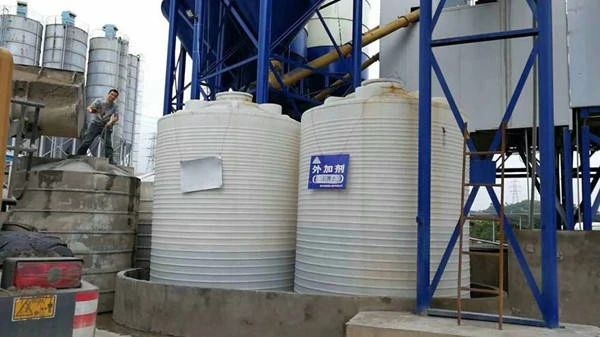Introduction, Author: Li
At present, it is rare to use a single type of admixture for compounding in concrete admixtures, and it has gradually developed towards the direction of high efficiency and multi-function.
Concrete Compounding
The purpose of compounding concrete admixtures is to simultaneously meet the needs of concrete for various properties, as well as to produce a “superposition effect” through the interaction of various compounding components. Composite admixtures are usually composed of a variety of surfactants, or inorganic electrolytes, such as high-efficiency water reducers, composite early strength agents, composite antifreeze agents, pumping agents, composite slow-setting air-entraining water reducers, etc.

The working performance and durability of commercial concrete mixed centrally must meet the following requirements
(1) The concrete should have good workability. The admixtures used should have a large slump without increasing the amount of water used, a high water reduction rate, a large slump without segregation, and good fluidity.
(2) The selected concrete admixtures must have good pumping performance. Good pumping performance means no pressure bleeding or low pressure bleeding, and the mortar can wrap coarse and fine aggregates and flow evenly in the pipeline. If a portion of air-entraining agent is added, the bubbles in the concrete in the pumping pipeline will act like balls, causing the freshly mixed concrete to roll forward and reduce the friction resistance between the concrete and the pipe wall. This is concrete with good pumping performance.
(3) The slump loss of freshly mixed concrete over time should be small.
(4) After the concrete is put into the mold, it still has good fluidity, which saves labor and effort in pouring, and it is easy to make the concrete project solid inside and bright outside.
Principles of concrete compounding
It has a certain water reduction rate, slump retention performance, low pressure water seepage and certain air entraining performance, namely water reduction, slump retention, water retention and air entrainment.
Precautions for mixing concrete
- When preparing admixtures, fully consider their adaptability to various raw materials, and pay attention to the interaction between different components and the sequence of solid dissolution.
- Different cements and other ingredients in admixtures and admixtures still have a great impact on the performance of water-reducing agents. For example, when naphthalene-based water-reducing agents and sodium gluconate are used together, the water-reducing rate increases significantly, and the organic Classes and inorganic classes should be properly matched.
- Different cements and admixtures as well as different mix ratios will cause changes in the retarding effect.
- The air-entraining effect of the air-entraining agent is affected by many factors, such as cement fineness, stone particle size, sand mud content, temperature, mix ratio, etc. When fly ash is added, there are many fine materials, small stone particle size, large slump, low temperature, etc., the air content of the concrete will be high.
